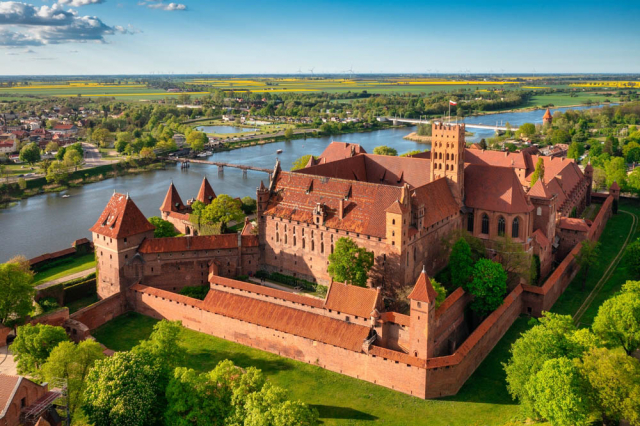The Baltic Crusades
The Northern Crusades (1147-1410)

In this podcast, Gregory Leighton, provides an introduction to the Baltic Crusades (also known as the Northern Crusades).
The Baltic Crusades were campaigns undertaken by Catholic Christian military orders and kingdoms, primarily against the pagan Baltic, Finnic and West Slavic peoples around the southern and eastern shores of the Baltic Sea, and also against Orthodox Christian Slavs.
From the outset, Christian monarchs across northern Europe commissioned forays into territories that comprise modern-day Estonia, Finland, Latvia, Lithuania, Poland, and Russia. The indigenous populations of Pagans suffered forced baptisms and the ravages of military occupation. Resistance by these populations was fierce and often involved clever and successful diplomacy.
The Teutonic Order
The ascendant Teutonic Order, played a key role in the Baltic Crusades, especially with the development of Prussia, and profited immensely from them, as did German merchants who fanned out along trading routes traversing the Baltic frontier.
The Northern Crusades provided a rationale for the growth and expansion of the Teutonic Order of German crusading knights which had been founded in Palestine at the end of the 12th century. After the subjugation of the Prussians, the Teutonic Knights fought against the Grand Duchy of Lithuania.
The Teutonic Knights failed to subdue Lithuania, which officially converted to (Catholic) Christianity in 1386 on the marriage of Grand Duke Jogaila to the 11-year-old Queen Jadwiga of Poland. However, even after the country was officially converted, the conflict continued up until the 1410 Battle of Grunwald, also known as the First Battle of Tannenberg, when the Lithuanians and Poles, helped by the Tatars, Moldovans and the Czechs, defeated the Teutonic Knights.
The Baltic Crusades are still remembered by the nations that emerged from them and have played a role in the development of their cultures and identities.
1. Who were the key powers of North and North-eastern Europe on the eve of the Baltic Crusades?
2. Can you tell us about the culture and politics of the Finnic, Baltic and Slavic peoples of during this period? What sources do we have?
3. How did the Baltic Crusades begin? What was the objective of the various combatants?
4. What was the initial impact on the invaded peoples? How did they resist?
5. How had the Catholic Christian military orders begun to establish themselves in North-eastern Europe in the 1200s?
6. To what extent were these Crusades both religious and commercial ventures?
7. Crusade as a 'medieval gap year' for young nobles.
8. What was the Crusading ideology of the Teutonic Order?
9. What role did the Teutonic Order have in the development of Prussia?
10. Can you tell us about how the Crusades developed and how extensive they were?
11. What impact did the Baltic Crusades have on the power balance in the region?
12. Can you tell us a little about the Novgorod Republic? To what extent did the Crusades lead to conflict between European powers and the Rus?
13. What was the legacy of the Baltic Crusades?
In order to access the full content of the podcasts please Login or Join the HA.

